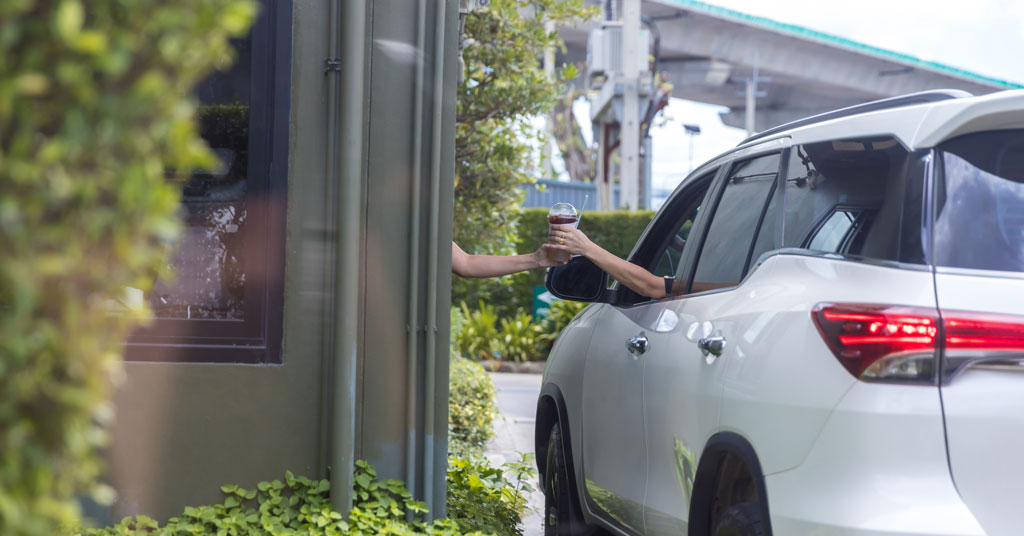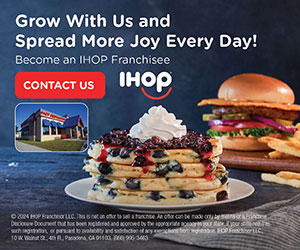Drive-Thrus: Pandemic-Induced Appendage or Consumer Preference?

While drive-thrus, historically, carved a niche for themselves primarily within the precincts of fast-food establishments, their relevance and demand skyrocketed in the aftermath of the pandemic.
No longer just a symbol of on-the-go convenience, drive-thrus today embody a profound societal pivot toward safety, efficiency, and minimal-contact engagements. Yet, as many franchises rush to emulate the success of giants like Chick-fil-A with its double-lane (and next year, four-lane) models, a question emerges: Is there a one-size-fits-all model in this domain?
As businesses scramble to retrofit this model into their operational framework, the challenge lies not just in the execution, but in the evaluation.
Considerations before carving out a drive-thru window
- Operational costs. The drive-thru transition isn’t solely a matter of construction. It’s a holistic shift demanding financial prudence. Staff augmentation, specialized training modules, the integration of advanced tech interfaces for seamless order processing, and infrastructure refurbishments escalate the operational cost matrix.
- Space dynamics. Physical space becomes a strategic asset. It’s not just about accommodating a drive-thru lane; it’s about orchestrating an experience. Ensuring smooth vehicular movement, optimizing parking solutions, and guaranteeing quick service without causing traffic spillovers, especially in densely populated urban corridors, necessitate meticulous planning.
- Brand image & consumer perception. Slapping on a drive-thru isn’t a one-size-fits-all remedy. Its introduction should echo the brand promises and the anticipations it has cultivated. The question is, does a drive-thru amplify the brand essence or dilute it?
Pondering alternatives: Curbside pickup
In situations where the spatial arithmetic doesn’t add up, or where the brand story doesn’t find a harmonious fit with a drive-thru, curbside pickups stand out as an innovative solution. Marrying the physical and digital, businesses can adeptly sidestep spatial constraints, all while aligning with the dynamic consumer preferences of today.
Let’s consider a hypothetical scenario with Urban Brew Haven, a conceptual urban cafe that’s celebrated for its cozy interiors and artisanal brews. With limited space and its brand ethos centered around intimate coffee experiences, a traditional drive-thru seemed out of place. Instead, they introduced a blend of curbside pickups and an outdoor serving window. This adaptation not only maintained their unique brand appeal, it also ensured efficiency and convenience for their clientele.
Your road map to drive-thru integration
1. Purpose & necessity. Beyond the veneer of novelty, is there a genuine market pull? Or is this a push driven by competitive pressures and trend “bandwagon-ing”?
2. Feasibility & finance. Will the current operational skeleton support this appendage? If infrastructural metamorphosis is needed, do the projected ROI metrics justify it?
3. Brand consistency. How does this new cog fit into the larger machinery? Does it enhance the brand tapestry or stick out as an awkward patch?
4. Operational dynamics. Beyond the obvious, how does this pivot recalibrate other operational dimensions such as inventory management and human resource allocations?
5. Consumer insight. What’s the word on the ground? Have loyal patrons expressed an inclination toward this? Is there anecdotal or empirical evidence pointing toward its potential success?
Takeaways
The focus for a business operator should always remain on enhancing the consumer experience, but not at the cost of diluting a brand’s essence or straining its resources. The ultimate consumer engagement strategy today hinges on balance. Offering a drive-thru or curbside pickup is just one piece of the puzzle; the larger picture is ensuring these touchpoints meld effortlessly with the brand’s core propositions. This calls for agility in approach, a feedback-driven ethos, and a commitment to iterative refinement.
As businesses venture into this territory, thoughtful exploration, rather than impulsive decisions, will be the beacon guiding them toward sustainable success.
Jason Fefer is an associate director of Marcus & Millichap’s Net Leased Property Group on a large team alongside his partners Robert Narchi and Tyler Bindi. They structure sale-leasebacks and negotiate leases on behalf of some of the largest franchisees across all sectors including the restaurant, automotive, and retail space. He can be reached at 818-669-2388 or jason.fefer@marcusmillichap.com.
Share this Feature
Recommended Reading:
Comments:
comments powered by Disqus| ADVERTISE | SPONSORED CONTENT |
FRANCHISE TOPICS
- Multi-Unit Franchising
- Get Started in Franchising
- Growth
- Operations
- Open New Units
- Leadership
- Marketing
- Technology
- Legal
- Awards
- Rankings
- Trends
- Featured Franchise Stories
| ADVERTISE | SPONSORED CONTENT |
$100,000
$150,000




 The multi-unit franchise opportunities listed above are not related to or endorsed by Multi-Unit Franchisee or Franchise Update Media Group. We are not engaged in, supporting, or endorsing any specific franchise, business opportunity, company or individual. No statement in this site is to be construed as a recommendation. We encourage prospective franchise buyers to perform extensive due diligence when considering a franchise opportunity.
The multi-unit franchise opportunities listed above are not related to or endorsed by Multi-Unit Franchisee or Franchise Update Media Group. We are not engaged in, supporting, or endorsing any specific franchise, business opportunity, company or individual. No statement in this site is to be construed as a recommendation. We encourage prospective franchise buyers to perform extensive due diligence when considering a franchise opportunity.